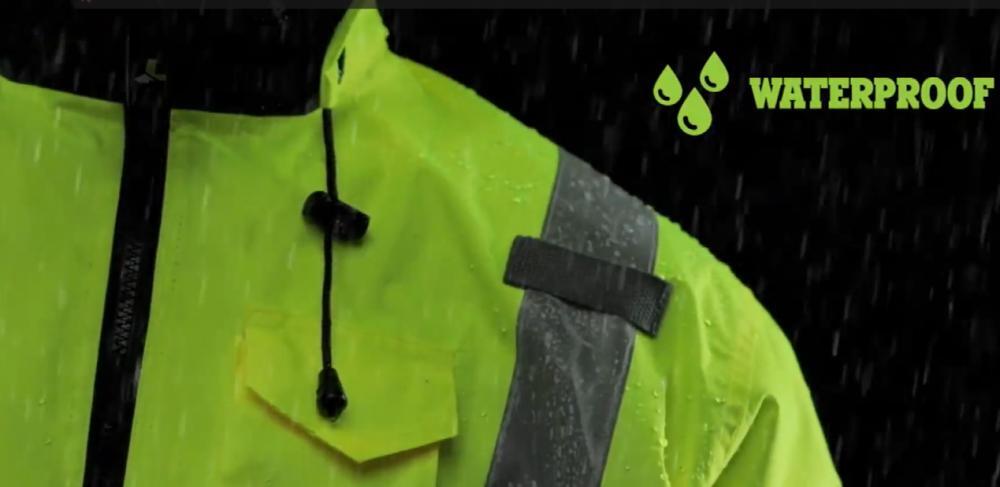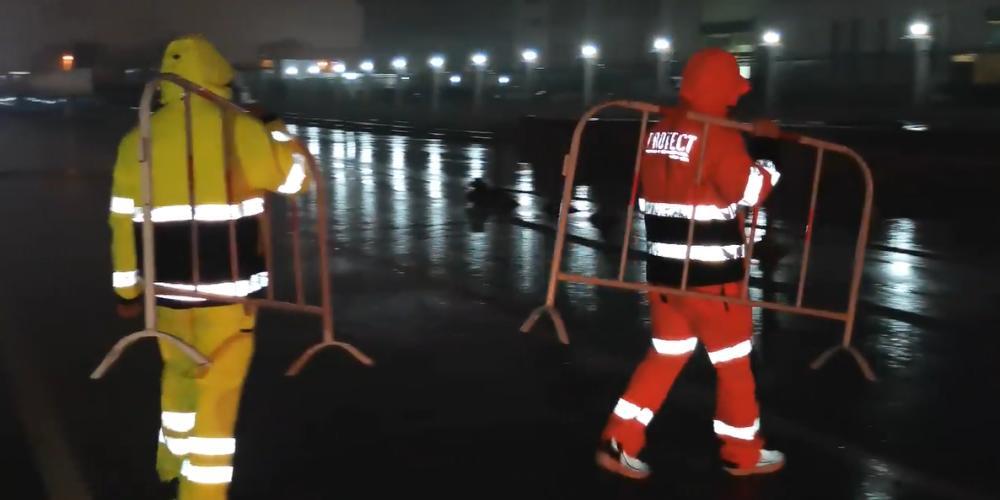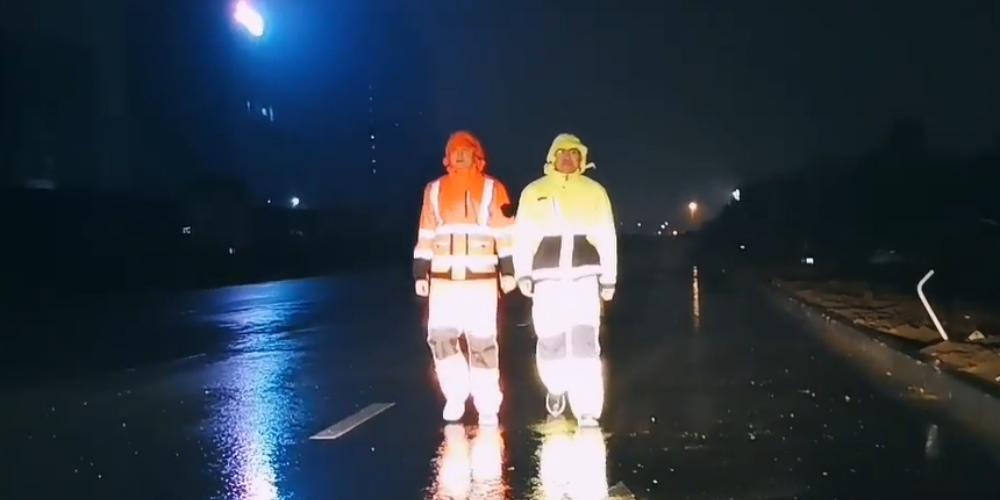“Into each life, a little rain must fall.” That’s how the old song goes, and it’s a good reminder that wet weather doesn’t discriminate and often arrives when least expected. But just because it’s going to rain sooner or later doesn’t mean you have to sit there and get wet.

In fact, the best defense against rain is equipping yourself with the right work rain gear. But with such a large array of rainwear on the market now, how can you pick out only the best stuff that will keep you dry and comfy on the job? Below, we’ll discuss the basics of choosing the best rain gear for today’s outdoor workers. As we begin, let’s take a moment to understand the principles behind how rainwear works.

How Good Rain Gear Keeps You Dry
Waterproof fabric is the foundation of any good piece of work rain gear. But how does a waterproof fabric work? To understand, it’s helpful to look at what’s happening on the micro-level. First, think about a non-waterproof fabric like cotton. When it gets wet, the material absorbs the water into its fibers. Instinctively, most of us know this: We know that cotton is a fine choice when you won’t be getting wet, but it will turn into a waterlogged mess in the rain or under heavy sweat.
Now, compare it to a waterproof material like those used in today’s work rain gear. These materials are designed to prevent water from permeating the fabric; instead, the water rolls right off. That might sound easy enough to achieve, but the challenge comes in creating waterproof performance while keeping the garment breathable so that sweat doesn’t build up underneath it. To achieve this, the typical waterproof fabric is made from three layers:
- Outer Layer: Also called the face fabric, this layer is typically made from resilient fabrics like nylon or polyester. This fabric itself usually isn’t strictly waterproof, but it typically has a durable water repellent (DWR) applied to it that helps keep water out.
- Coated Layer: This ultra-thin layer is usually made of a substance such as polyurethane or Teflon. In this thin membrane are microscopic holes that perform a neat little trick: They’re so small that they keep out liquid water while allowing water vapor to flow out, keeping the garment breathable and comfortable. A hydrophilic coating on this layer also helps draw out moisture from underneath the jacket.
- Comfort Mesh: The final layer is a fine mesh that protects the middle layer and improves comfort. In some jackets, the fabric only has two layers and a separate fabric layer is used for the jacket’s inside.
Different jackets use different types of waterproof fabrics, but most are variations on this technology. Next, we’ll talk about some of the many types of work rain gear available now.

What Type of Rain Gear Do You Need?
Rain gear comes in many different styles and types of garments. For most applications, the standard choice is one of the following:
Rain Jacket: The rain jacket is most people’s go-to rain gear, thanks to its versatility and the number of different models available. Most rain jackets are longer than a standard jacket and include features such as a storm flap to keep water out of the zipper. Many also offer a snap-on or zip-on rain hood that can be attached as needed.
Rain Pants/Bib: While rain pants aren’t a household item the way a rain jacket is, professionals who work outside in the rain for extended periods, such as first responders, often have a matching set of rain pants or bib overalls to go with their rain jacket. That’s because other common durable pants fabrics like denim become waterlogged in the rain, while a pair of polyurethane-coated rain pants will help keep the wearer dry all day long.
Parka: A parka isn’t specifically a type of rain gear, but it’s a common sight in environments that require insulated rain gear. The waterproof outer shell and warm inner lining of a parka combine to make it a great choice for any winter precipitation situation, although it will often be too hot for a warmer environment.
Multi-Layer Rain Gear: If you work in an environment with unpredictable weather conditions, multi-layer rain gear can make your life much easier. These versatile garments are created with multiple layers that zip or snap together for easy removal. When the rain lets up, or the temperature changes, it’s a cinch to customize your perfect level of protection and warmth.
We’ll continue the topic in Part Two.